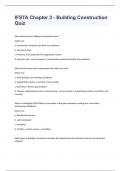Samenvatting
Complete summary of J.W. Stoelhorst's "Thinking About Strategy" Teaching note.
A complete and in-depth summary of the Teaching note by J.W. Stoelhorst "Thinking about Strategy", the updated 2008 version. Fundamental summary of the Strategy and Organisation course.
[Meer zien]













